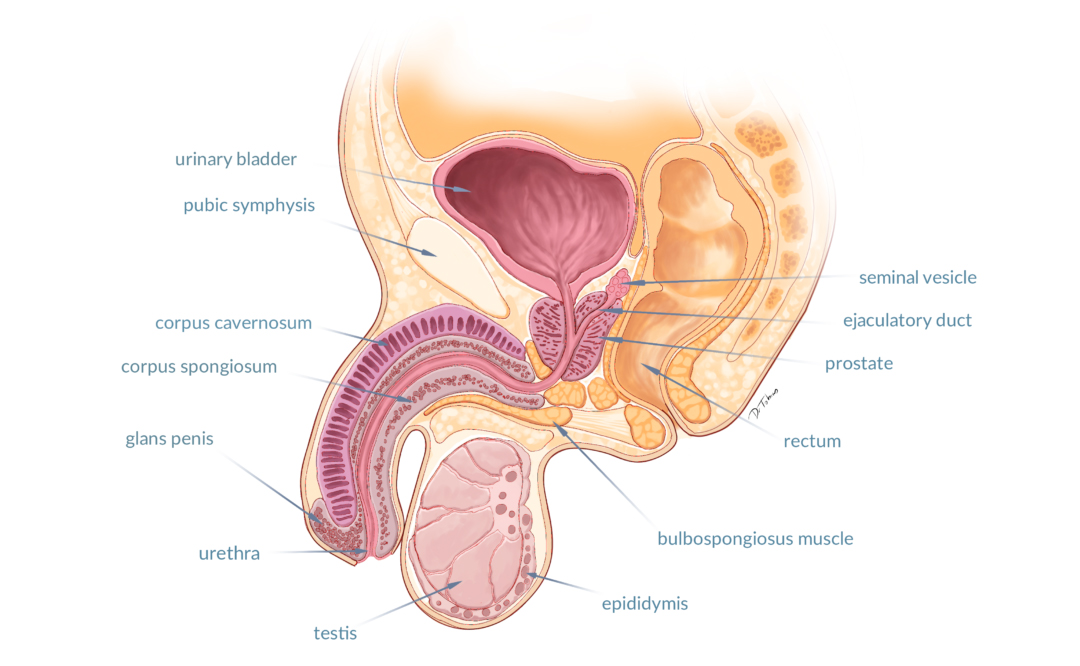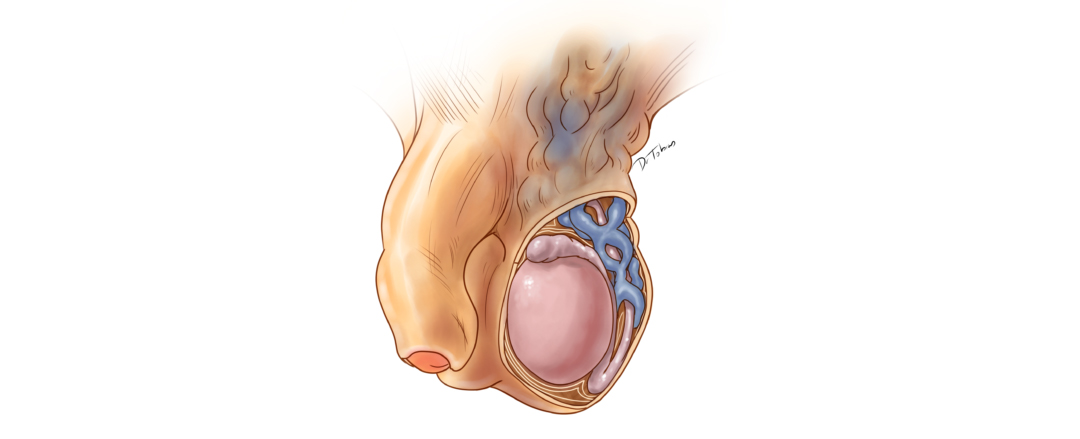Varicocele
What is varicocele?
Varicocele is an abnormal enlargement of the network of small veins found in the spermatic cord of the testis.

Varicocele is a benign condition that does not imply any serious health issue or is related to the onset of cancer.
In about nine out of ten cases, the varicocele is located in the left testis. In few cases, varicocele is found in both testes, whereas varicocele in the right testis is a rare phenomenon.

How common is varicocele?
Whereas varicocele is found in about 15% of all men, the incidence is somewhat higher in infertile men. One in four men with a reduced sperm quality have varicocele.
Often, the condition develops during puberty.
What are the symptoms of varicocele?
Most men with varicocele have no symptoms. Often, the varicocele is found because the man sees a doctor due to fertility problems.
In some men with varicocele, the dilated veins are palpable from the outside.
Some men have testicular pain because of varicocele.
What are the causes of varicocele?
The dilatation of the small veins in the spermatic cord is caused by reduced blood drainage away from the testicular vein network and into the venous system. Consequently, venous blood pile up in the testis, which results in increased hydrostatic pressure and increased testicular temperature. This can impair the function of the cells in the testicle responsible for supporting the production of sperm cells. As a result, the man’s fertility can be affected.
How is varicocele diagnosed?
You might be able to identify a varicocele by self-exam of the scrotum, as they can look and feel like a ‘bag of worms.’ Go see a doctor, if you think you have a varicocele.
The doctor will give you a clinical assessment including a physical examination of the scrotum.
Sometimes, the doctor will make an ultrasound scan of your testes, to support the diagnosis based on the physical examination.
How is varicocele treated?
Most men with varicocele are not treated. Only in cases where the man has testicular pain or impaired semen quality and fertility problems, treatment is offered. Pubertal boys, whose left testis grows more slowly due to a varicocele will also be offered treatment.
Varicocele can be treated surgically by microscopic varicocelectomy or by a non-surgical procedure called percutaneous embolization. Mild testicular pain can be released by taking pain-killers such as acetaminophen and ibuprofen.
The recommended treatment is microsurgical varicocelectomy. Here, the surgeon makes a small incision above the scrotum through which all small veins are ligated. The surgeon uses a microscope while ligating the veins and is careful not to harm the testicular arteries and lymphatic drainage.
The alternative treatment form, percutaneous embolization, is done by an interventional radiologist and uses injected contrast, x-ray guidance and coils or balloons to block the blood flow to the varicocele.
For both treatment forms, healing after surgery is relatively fast and pain is mild. Few men experience complications after surgery or have recurrence of the varicocele. Semen quality will improve in some, but not in all, men who have been treated for varicocele due to fertility problems.




















